Exploring Japan offers an unforgettable mix of ancient tradition and cutting-edge modernity. Whether a first-timer or a seasoned visitor, knowledge of some essential traveling tips can significantly affect how much a visitor will enjoy their time in this country. Below are practical guidelines for navigating the fascinating landscape of Japan with minimum hassle and maximum enjoyment.
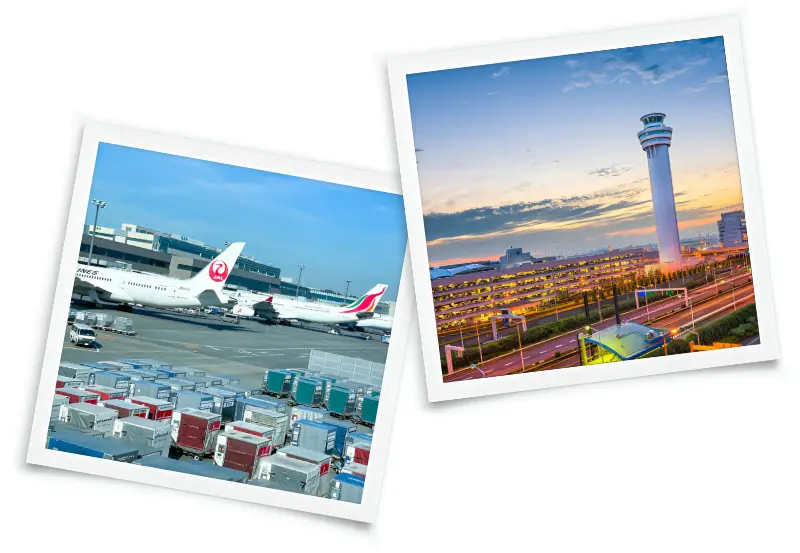
1) Arrival in Japan
Arrival in Japan: Smoother Transition to Downtown from Narita and Haneda
Arriving in Japan is like stepping into another world where ancient tradition meets futuristic innovation. Whether your plane touches down at Narita or Haneda Airport, the pulse of Tokyo is just a train ride away. As a seasoned traveler to Japan, I’ve navigated these routes numerous times and have distilled my experiences into practical advice to ease your journey from the airport to the heart of Tokyo.

From Narita to Tokyo: Planning the Route
My common way starts with the arrival at Narita Airport, which is located about 60 km from Tokyo. That is not the closest airport, but it does offer really great choices of transportation means for any budget. Most of the high-class and time-saving options to get to downtown Tokyo are JR Narita Express.
This train will take you directly to Tokyo Station in about 60 minutes. The price is about ¥ 3,020 ($20 USD). It is very smooth, sometimes with interesting views on the outskirts before you plunge headlong into the bustle of the big city. What’s nicer, you will pay nothing if you are in possession of a Japan Rail Pass.
The Keisei Limited Express is the find of any traveler trying to cut corners on travel money sans giving up travel time. Pay just ¥2,470 ($17 USD) and go all the way from Narita to Nippori and Ueno Stations in about 36 to 40 minutes. It’s not as plush as the Narita Express, but you’ll get there efficiently and sans the hefty price of a taxi.
From Haneda to the very center of Tokyo, quickly and inexpensively.
Flying into Haneda: congratulations-you’re way closer to the center of Tokyo. From Haneda, my go-to is always the Keikyu Airport Line, an efficient and-more importantly-relatively cheap way into the city. You’ll be at Shinagawa Station in about 11 minutes for a reasonable ¥510 and can easily transfer onto the Yamanote Line, which will take you directly to Shibuya, Shinjuku and Harajuku, among other common areas.
Or, you can hop on the Tokyo Monorail, which rises for rides to the same destinations for ¥490 and takes about 32 minutes to reach downtown Tokyo. Either one is pretty and introduces the city as you glide past residential and commercial areas that give way to Tokyo’s skyscraper-studded skyline.

Cruising Through the Midnight Maze: Tips for Late Arrivals
A word to the wise, Tokyo’s public transportation does not run at night – roughly a period between midnight and 5 AM. If your plane happens to arrive during these hours or if you take any of those early bird flights out, well – be prepared. I had not been aware of this schedule on my first trip.
The alternative to late-night, expensive taxis is to book a room at an airport hotel for the night or use a so-called capsule hotel – the Japanese answer to those arriving late or departing early.
Conquering Airport Transfers: Be Smart
Each time I come to Japan, I am always amazed with just how sleek and tourist-friendly the transportation is in Tokyo. There’s great English signage in both Narita and Haneda, very helpful staff, and finding your way to the train platforms is quite well done. Purchase your train ticket or pick up a rechargeable IC Card, such as a Pasmo or Suica card, good to go on public transit from the airport throughout your stay.
These cards are a lifesaver for smooth, tap-and-go traveling across the city.
Conclusion
From the instant you step off the plane, Tokyo welcomes you into its rhythmic dynamism with equally efficient and plentiful transportation options: Narita Express, speedy; Keisei Limited Express, thrifty; the routes at your fingertips from Hanenda-all designed to segue you from the serenely calm flight into the pulsating pulse that is unmistakably one of the most pulsating cities on the planet.
It is with these tips that the arrival in Tokyo should be about less stress but more anticipation of the next adventure. Now, get on with the job of packing your luggage to begin a journey into each and every minute detail that introduces a few wonders of Japan.

2) Navigating Public Transportation in Tokyo
Arrived and settled in, the next adventure began-the mastery of impressive and efficient public transportation within the city. Getting around Tokyo-learn how to get your way around this sprawled metropolis-is a skill that’s equal parts art and science. How you too can get around town like a local in Tokyo-using its public transit network-is now discussed here.
Choosing the Right Pass: IC Cards versus Japan Rail Pass
First, understand the types of travel passes available to get one’s way around Tokyo: prepaid IC cards-namely, Pasmo and Suica-usable across different modes of transportation, from trains and buses down to some taxis, within Tokyo. These cards won’t just be easy to use because of tap-and-go technology, but can also be used even for making purchases in many vending machines, stores, or restaurants. The basic price available is an IC Card, which costs about ¥ 500 with a refund of ¥ 500 when the card is returned.
If people are going to cross many regions of Japan, this pass is super worth it. Almost all the long routes that JR operates, including famous Shinkansen bullet trains, will be available with this. This, in turn, shall save the fortunes of tourists in inter-city travel costs. The 7-Day JR Pass, available at about ¥29,650, is totally worth every paisa if one is going to make a lot of high-speed train trips. However, one thing is that, unlike the city metro and nonJR lines, the JR Pass itself does not extend complete urban coverage and requires an IC Card to join hands.
Smart Navigation: Avoid the Rush, Deal with Luggage
Tokyo’s trains are legendary for their punctuality and efficiency, although during rush-hour times they become incredibly crowded. This is usually between 7:30 AM and 9 AM and then from 5 PM until 7 PM. My advice would be to make plans for other times if at all possible, or be prepared for a real Tokyo squeeze. Large luggage through the station at rush hour times can also be quite a pain. For days when you can’t travel with just a backpack, services like the Takuhaibin luggage forwarding service are a godsend: for a fairly reasonable charge they’ll take your bags straight from the airport to your hotel, or from one hotel to another, freeing you to travel easily around the city.
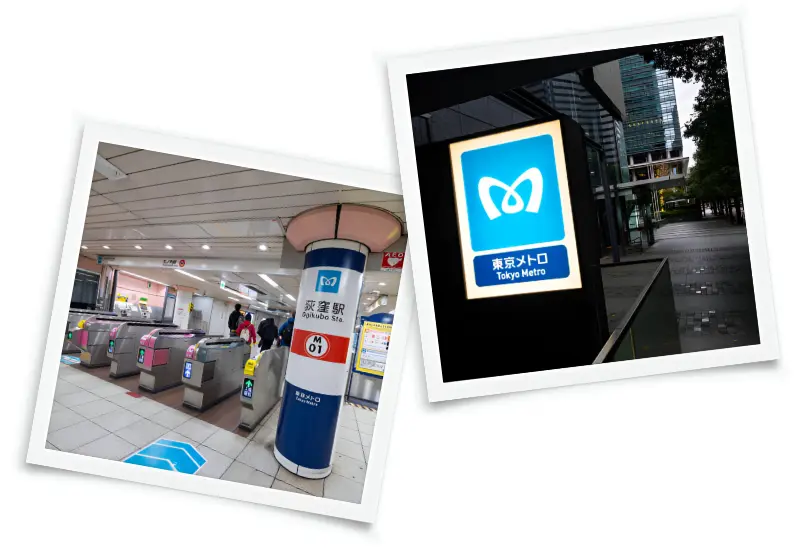
Saving Money: Travel Smart
One of the best money-saving tips that I can give people is whether to use a single ticket, a day pass, or multi-day passes, depending on the itinerary. Day passes like Tokyo Metro’s 24-hour Ticket for ¥600 is an all-you-can-ride ticket for the lines of Tokyo Metro, sometimes so affordable when having extensive use on one day. On the other hand, longer staying and traveling tourists may consider the 72-hour Tokyo Metro Pass for ¥1,500.
Tokyo Economically Revisited
These will help you understand the quick way to get around in Tokyo so that you confidently and easily can travel around this big city. From flexibility provided by an IC card to extensive travel using all forms with a JR Pass, the ability to comprehend and use Tokyo’s transit is surely going to enhance your experience and make each trip a part of your adventure. Capture the beat of this city-between moving from one happening destination to another-look out for those special nuances of the culture that travel here is all about.

3) Money-Saving Tips: Maximizing Your Yen on Transportation and Currency Exchange
Going through Tokyo and further into Japan is absolute exhilaration, but some smart planning will get you through without having to spend a single yen unnecessarily. Having taken innumerable trips myself, I have developed some ideas on how I can save money regarding transportation and currency conversion, which are real keys to making one’s money go that little bit further in this most exciting destination.
Picking Up Suitable Transportation Passes
One of the first things I learned as I started getting my bearings in Japan: choose correctly between different varieties of transportation passes that could greatly impact your travel cost.
- IC Cards: PASMO and SUICA – indispensable during a short stay or when movements are confined within the major cities such as Tokyo or Osaka. In fact, these cards can be loaded with credit and used not only for traveling but also for small purchases at convenience stores and vending machines. The price of convenience for such tap-and-go cards reasonably cheap, considering the fact that the users will not have to buy individual tickets, which again are costlier. Moreover, the amount unspent and the deposit of ¥ 500 is refundable at the time of returning the card.
- Regional Passes If your plans call for travel beyond Tokyo, regional passes will be available. For example, the Tokyo Wide Pass includes three days of unlimited travel on select trains, including Shinkansen, for about ¥10,180. This can be a good deal if you plan on taking day trips out to Nikko, Fuji or the Izu Peninsula.
- Japan Rail Pass: It will be worth it for visitors making more interregional journeys. This card entitles practically every kind of JR national train, including Shinkansen, for travel at a fixed price. Rather expensive at the start, at around ¥29,650 for a 7-day pass, it saves oodles of money against buying single Shinkansen tickets, which can range in price from ¥14,000 to ¥20,000 for just one way between Tokyo and Kyoto.
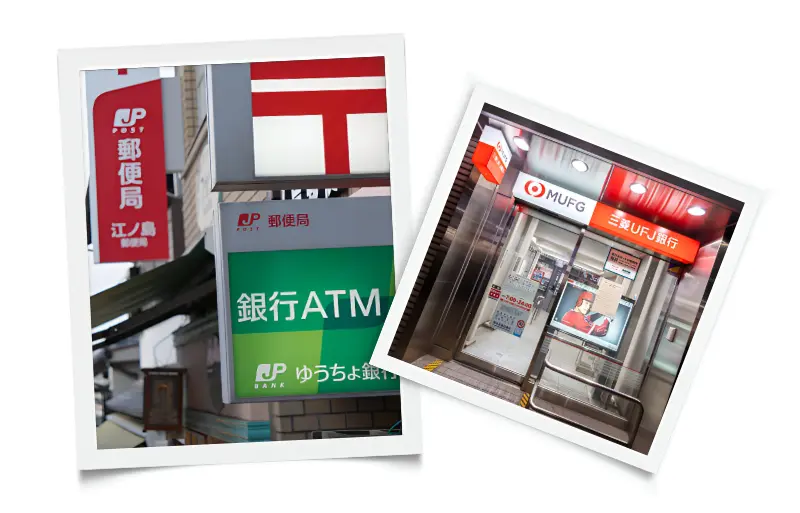
Smart Cash Exchange
Handling money efficiently is another vital sphere of great savings that travelers can make:
- Shun Airport Currency Exchanges: While it might be very handy to have your money exchanged at airports, the rates are never as good, with even higher fees. My strategy is to exchange a small amount of cash needed for initial expenses-like transport from the airport-and then seek better rates at city banks or post offices.
- Be smart with ATMs: Japanese ATMs are super reliable, and most will be found in 7-Eleven stores. They give the best possible exchange rates compared to currency exchange booths. Pay extra attention to your home bank’s international withdrawal fee; try to limit the frequency by taking out larger quantities of.
- Credit Cards: For bigger purchases come credit cards. Major credit cards are widely accepted in Japan; the rates are good. As a matter of fact, credit cards can be used for bigger purchases such as hotel bills and expensive meals. Without fail, always choose to be charged in yen when using your card because it will avoid additional conversion fees that may be tacked on should you choose to be charged in your home currency.
- Bring Some Cash: As modern as Japan is, it is still largely a cash-based society. For smaller places, as well as for rural areas and even some temples, no credit cards are accepted. Having cash available is quite critical for you; this helps you to prevent temptations of spending when unnecessary, as literally it shows your cash dwindling.
Smoothening of Expenses
Financial navigation during your trip to Japan involves a lot more than saving money; actually, it’s about having a much better experience with less stress and logistical problems. With the right transport pass and due currency management, you will ensure the trip becomes affordable, culturally enriching, and a lot of fun.
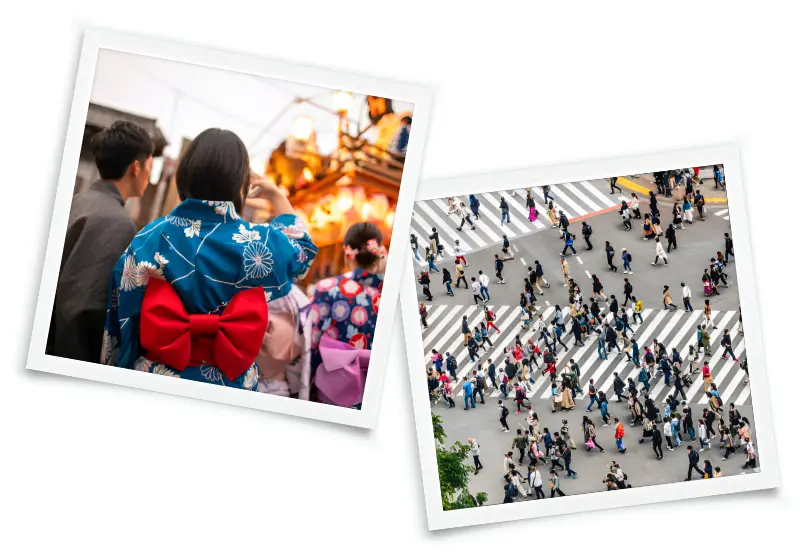
4) Cultural Etiquette and Safety Tips: Showing Respect While Being Confident in Japan
Traveling in Japan is to experience a civilization where tradition occupies paramount significance in day-to-day life. This will further enhance experiences for a traveler and is a sign of respect toward the culture of the land. Besides, a briefing on safety-mainly for solo travelers/women-forms part of the essentials for a hassle-free sojourn.
Mastering Japanese Cultural Etiquette
Equally rewarding to traveling through Japan’s physical landscape is travel through its cultural one. Some critical etiquette tips I’ve picked up so far include
- Politeness is the Key: The Japanese consider politeness one of the most important values. A small bow, a moment of silence in public places, and a word of politeness and gratitude-such as “arigatou gozaimasu”-will add significantly to it. Upon entering any shop or restaurant, the visitor will often hear “irasshaimase” meaning welcome, so a slight nod and a smile means much.
- No Noise Transiting: Public transport is super quiet in Japan; it is considered impolite to be noisy over the phone or talk a lot. In case you need to receive calls, do so in a quiet voice or via text. Sticking to giving personal space is what makes the Japanese transportation so peaceful.
- Dress modestly when visiting temples and other traditional places; dress well when entering into the temple by covering your shoulder and removing your hats. Also, a person should remove the shoes before entering the residence of someone’s home and traditionally some accommodations such as ryokans.
- Being Careful with Money: Whenever at stores or restaurants, instead of touching directly with the cashier, place the money and receipts in a small tray provided. That again comes under the cleanliness and lessening of physical contact which they consider polite in the etiquette of Japan.
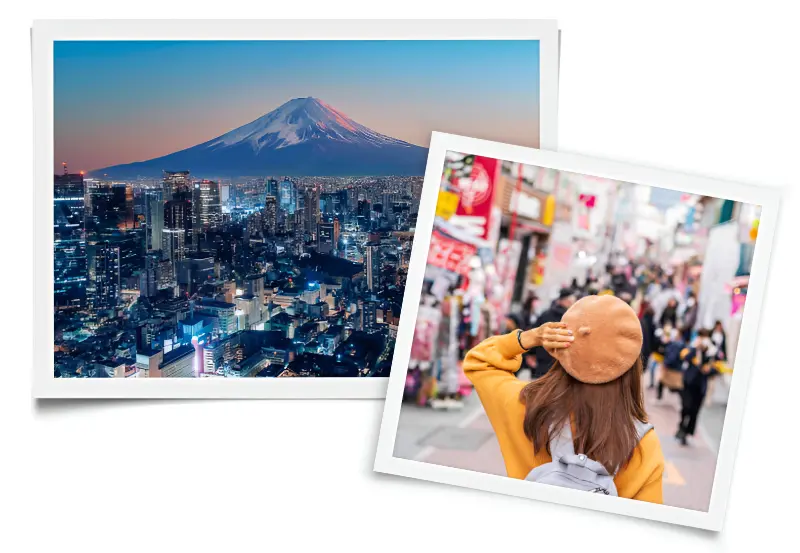
Safety Tips for Solo and Female Travelers
Generally speaking, Japan is very safe, and that’s why so many solo travelers, among them women, just adore visiting this country. But big cities and places of congestion require alertness:
- Stay Aware in Crowded Places: While Japan is generally safe, crowded places can sometimes be hotspots for petty theft or unwanted attention. Keep your belongings secure and be aware of your surroundings. Use cross-body bags that can be easily monitored and keep zippers closed.
- Whenever possible, travel off-peak to avoid the crush of rush hour. This is especially so for women, as the trains can get very crowded, and unfortunately, incidents of groping have occurred. Many lines have women-only cars during peak time and offer an additional safety layer.
- Conveyance Availed Should Be Reputable: Avail only reputable transportation services. Taxis are safe and generally reliable but make sure that there is an official insignia on the vehicle. If traveling during late hours, use an application to prebook a reputable taxi or ask the hotel to book a taxi for you.
- Communicate Often: When alone, travelers should make sure they call friends or family more frequently. Also, it is good to let them know your traveling schedule, the city you are going to visit, and where you are staying.
- Cultural Sensitivity in the Nightlife Areas: Notably, some bars and some clubs in the nightlife may expect different kinds of behavior. Some of those places could be local-oriented, and may have their silent rules; observing those and adapting to them is fun and respectful.
Embracing Japan’s Cultural Nuance
This will not only be respectful to the culture but also enrich the travel experience of a person into understandings of the ways and whys behind Japanese etiquette in matters of safety. Japanese culture is further combined with social etiquette-an adaptation to such practices would make the foreigner more than just a visitor: a contributor to the dynamic cultural exchange so typical in modern travel.

5) Eating in Japan: Savoring Flavor with Politeness and Gusto
Japanese food is not exactly to shut up your stomach but is a journey through culture, with every meal being an art and a ritual. Scenes may turn as diverse as they get sophisticated from sushi bars in Tokyo to noodle houses in Osaka. Laid out here is how you can make the most of dining in Japan by respecting the locals and trying some of the most iconic dishes in the country.
Finding the Best Places to Eat
Eating in Japan can be bewildering, yet hugely rewarding. Here’s a rundown on how to find the best restaurants:
- Move with Local Knowledge: Sites like Tabelog-Japan’s best restaurant review website-are priceless. Unlike TripAdvisor, this site is used predominantly by locals; thus, one understands from it what the Japanese rate as excellent dining. Restaurants with over 3.5 scores are usually very good; scores of above 4.0 promise an exceptional experience.
- Follow the Crowds: Yes, a queue outside a restaurant is a good precursor, more so if space is expensive, like in Tokyo, and diners can be quite exacting. So do not be afraid of waiting because this may be the path to some of the best meals you ever had.
- Ask for recommendations: Just ask locals, hotel concierges-heck, even shopkeepers-what they like, and the Japanese invariably are proud of their food culture and will hasten to point you in the right direction to the best of the local eats.
Understanding Table Manners
Of course, dining in Japan is even better when one knows and observes the ways of dining etiquette.
- Chopsticks: For starters, never stick your chopsticks straight up in the rice inside of your bowl because this gesture is a ritual performed for the dead. Place your chopsticks in front of you over the hashioki, or chopstick rest, when you aren’t using them.
- Grace before and after the meal: People say “itadakimasu” or I humbly receive before starting to eat and “gochisosama dehita,” or thank you for the meal, after finishing to appreciate the meal.
- Share Nicely : The sharing of dishes is one common thing in most Japanese meals; instead of passing the food chopstick to chopstick – considered another rite reserved for funerals – place it on your plate first before offering.

Must-try dishes
As big as Japan’s culinary repertoire is, a few of these dishes definitely have to be tried:
- Sushi: Besides conveyor belt sushi, check out a couple of sushi bars and follow the motion of sushi right from the chef’s hands. Sushi, especially in Tokyo and Kanazawa, is so fresh it will change your life, and you definitely shouldn’t miss nigiri, sashimi, and local varieties.
- Ramen: Each region in Japan boasts its own particular specialty, from the thick, miso-based broths of Sapporo to Hakata’s tonkotsu ramen, with its flavorful infusions of pork. Find those shops that do broth all day for a real deep and flavorful experience.
- Kaiseki: Kaiseki is literally Japan’s version of haute cuisine-a multi-course meal that balances taste, texture, and appearance. It is as much an art form as it is a meal; an expression of the seasonal delicacy echoed in every subtle nuance.
- Okonomiyaki and Takoyaki: Okonomiyaki is the Japanese savory pancake, which basically consists of a batter, shredded cabbage, and other various meats or seafood. Okonomiyaki is an informal food originating from Osaka – it tastes so good, especially served piping hot with vinegar sauce.
Culinary Conclusions
In fact, this can make eating in Japan one of the most enjoyed moments of your visit. Embracing etiquette and the vast amount of cuisines could make every meal not just for sustenance but also a cultural experience.
Savor the taste of sake during fast cuts of a sushi chef at work, or slurp down ramen bowls with the locals; the flavors of Japan will not let you go.
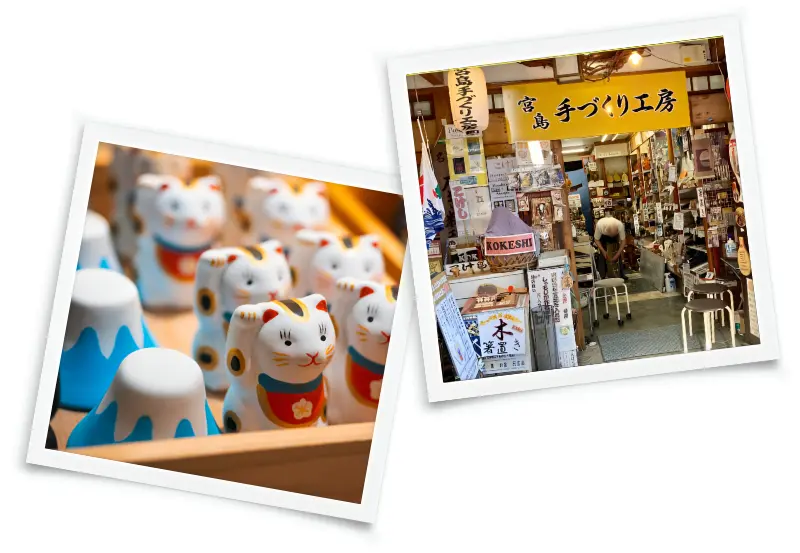
6. Shopping and Souvenir in Japan: Tax-Free Benefits and Must-have Memorabilia
From a gamut of traditional crafts to updated pieces of technology, it is a shopper’s dream come true. Knowing how to deal with the various ways, especially the tax-free process, can make shopping all the more rewarding. Herein comes how you can make the most out of your shopping trips in this country: bring back home the souvenirs, take back the memories.
Understanding the Tax-Free Shopping Process
Many stores in Japan have tax-free shopping for tourists where the consuming tax added to the goods, normally 10%, need not be paid. The method to reap maximum benefit from this is as follows:
- You must be an eligible person: a temporary visitor who comes to Japan and stays in the country for less than six months and shows a passport at the store. A photocopy or an image on your phone cannot be used because your actual passport is needed as verification of being a tourist; your passport needs to have the record of your purchase attached by the clerk.
- Participating Stores “Tax-Free Shop” sign will be indicated in popular shopping area and is mostly major department stores, electronic stores like Bic Camera, Yodobashi, and in-line shops like UNIQLO and Don Quijote.
- Minimum Quantity Purchase: Many have this minimum quantity that should be purchased for them to give this tax-free shopping, usually 5,000 yen on consumable goods like snacks, cosmetics, and medicine, and 5,000 yen on general goods like clothes, electrical, handbags. These should be from the same store on the same day.
- Tax Exemption at Store Level: Upon purchasing the item, the store will have you fill out a tax exemption form, and attach a receipt in your passport. The receipts that are attached need to stay with the passport until one’s time of departure from Japan. Note that tax-free items are to be taken out of the country unused, so do not open them until you get home!
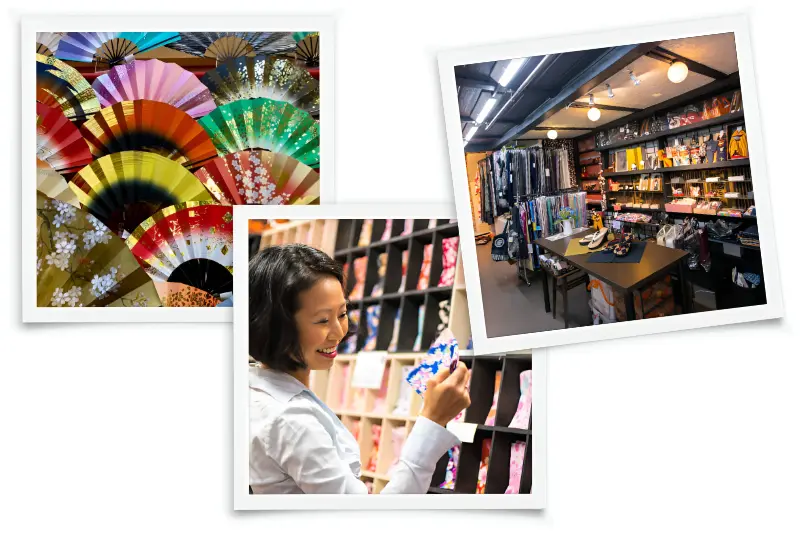
Things to bring back home best
With its rich culture and spirited feel for innovation, there is pretty much everything in the Japanese arsenal of souvenirs. Here they are:
- Electronics: Japan is famous for good quality and the latest type of electronics; small and updated gadgets like cameras, watches, special kitchen tools can easily be found in electronic cities like Tokyo’s district of Akihabara.
- Traditional Crafts: These are good options, coming as they do from more conventional Japanese items, from beautifully hand-painted ceramics from places such as Kyoto to indigo-dyed fabrics, the delicate lacquerware.
- Anime and Manga Goods: Anyone who loves anime and manga would be in Akihabara or Nakano Broadway, referred to as home for otaku, as items ranging from rare and collectible figures to goods used in theme cafes can be found.
- FASHION: Tokyo is one of the really fashionable cities; it will be great to go shopping in places such as Harajuku. Moreover, Japanese denim is valued for its high quality and craftsmanship, hence jeans are one of the popular items to take back home.
- Snacks and Green Tea from Japan: Snacks like Matcha Kit Kats, Pocky sticks, and savory rice crackers are some of the fun light gifts. Another great souvenir could be high-quality green tea; some well-known areas that grow tea leaves include Uji, Shizuoka, and Kagoshima.
Final Words: Shopping in Japan
Shopping in Japan might be a very exciting part of travels. Avail tax-free shopping and variations in products to bring home souvenirs and little bits of Japanese culture. Be it the latest gadget in electronics or some traditional work of art, every piece narrates its story and keeps the memories of Japan alive long after going back from the country.
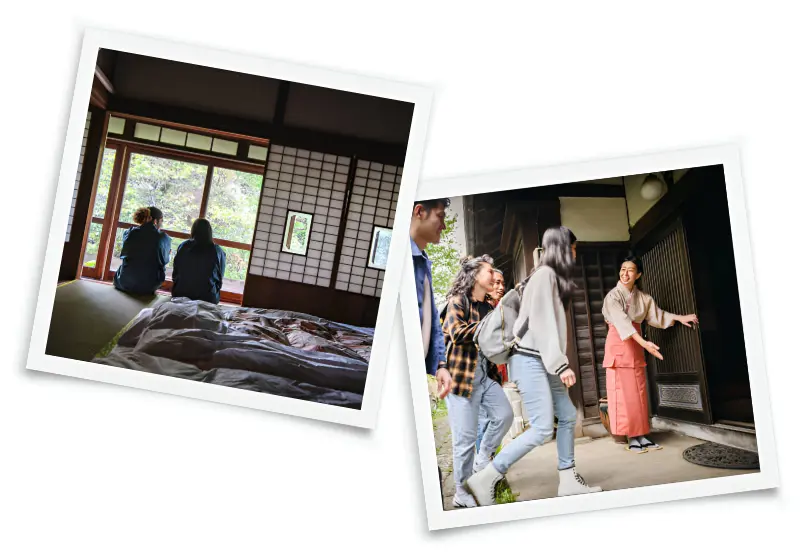
7. Japan Accommodation Tips: From Hostel to Ryokan, Everything Is Waiting for You
Where to stay really makes quite a big difference when traveling to Japan. Be it a traditional ryokan offering serenity or a modern hotel offering sleek comfort, Japan offers options for each particular traveler with different kinds of budgets. Herein is set out how you will be able to make your way with ease through the huge range of different types of accommodation available in Japan in order to find just that perfect place to rest and recharge.
Choosing Accommodations to Suit Your Needs
- Budget: Japan has a range of accommodation from super luxurious hotels down to higher-end, more budget-friendly business-class hotels or hostels. The so-called capsule hotels might just be a really different, not-too-expensive way of spending the night for those who have a very low budget. The prices range from around 2,000 yen for a capsule up to over 30,000 yen for one night in a luxury hotel room.
- Location: Location is crucial in maximizing your time and enjoyment in Japan. Staying centrally can save you time and transportation costs. For example, areas like Shinjuku in Tokyo or Namba in Osaka are ideal for tourists due to their proximity to major attractions and transit networks.
- Type of experience: First, decide what kind of experience you are looking for in Japan: luxurious, comfortable, traditional, or something else altogether.
- Modern Hotels: Modern comfort facilities-Most chains are available all over the country. Services and amenities are to a high quality, which nearly all of them have more than one restaurants in their premise and transportation services.
- Ryokans – These are traditional Japanese inns allowing guests to enjoy the culture of Japanese living and hospitality. Many ryokans include dinner-usually kaiseki-and breakfast served in either your room or dining area as part of the stay. Traditionally, accommodations included tatami floor mats to sleep or sit on, futon to sleep on, and sliding doors called shoji made of translucent paper. Ryokans do vary in price and can be quite expensive; some offer hot spring baths or onsen.
- Guesthouses and hostels: These cater for budget travelers and are more sociable with shared bathrooms – and sometimes large dining areas. These can also be great places to meet other travelers, and perhaps get some local tips on.
- Love Hotels: These are uniquely Japanese kinds of hotels, available only in the country, providing ample privacy and new sensations, usually booked by the hour or overnight, with their special thematic and decoration ideas.
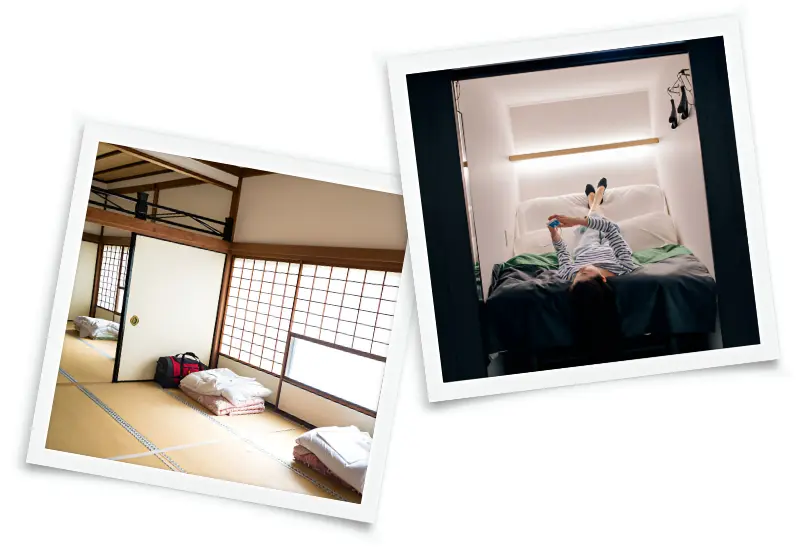
Unique Lodging Options
Besides traditional hotels and ryokans, Japan has a number of unusual places to stay:
- Hotel Capsules: Good for single travelers and saving every buck. The hotel has small-sized capsules which were good enough to get a sleep whereas bathrooms are shared, very centrally located and very cheap.
- Temple Lodgings: Shukubo also offer spiritual retreats – temple stay, living the life of a monk, eat vegetarian foods prepared by monks called as shojin ryori and attend early morning prayers. These probably afford one of the deepest experiences regarding Japanese culture and religion.
- Manga Cafes: Traditionally designed to be a place where one reads manga and accesses the internet, many of these cafes today provide reclining chairs or flat floor space that one can rent overnight. These are very affordable compared to hotels for economy travellers.
Final Tips on Accommodation Bookings for Japan
- Book in advance since all the accommodations fill up really fast, especially in spring for cherry blossoms and in autumn for koyo.
- Reviews: Use websites like TripAdvisor, Booking.com, or Google Reviews that will give a comparison of what to expect from either kind of accommodation.
- Consider Accessibility: Especially if traveling with elderly or disabled companions, ensure your accommodation is accessible.
Accommodation in Japan has to be selected as a balance between budget and experiences. Be it pampered luxury within a modern hotel, rustic charm in a ryokan, or this unique experience of capsule hotels, each one represents different facets of Japanese life and culture and will be as memorable as the places visited.

8. Avoiding Tourist Traps in Japan: Navigating for Authentic Experiences
With its rich culture and picturesque landscape, Japan sees millions of visitors annually. It has much to offer in terms of genuine experiences, but-like many such places-it has its tourist traps. Knowing how to avoid these will make the journey far more rewarding. Here is how you can avoid those pitfalls and find the real Japan.
Tourist Trap Identification
- Restaurants and shops geared towards inflated prices are located near highly toured areas of the city. Think of Tokyo’s Asakusa district or Kyoto’s Arashiyama neighborhood. Restaurants that have multilingual menus directly outside a major tourist site will often be pricier on regular dishes. This can also be said of souvenir shops right next to major attractions.
- Packaged Tours That Offer Little Time: Many packaged tours rush visitors through sites without giving them time to truly absorb them. These can feel like you’re ticking boxes rather than experiencing the place.
- Congested Attractions: Main spots like Fushimi Inari Shrine in Kyoto or Tokyo Tower will be too crowded, keeping in mind that is peak tourist time. That would ruin the whole idea of going and actually ‘enjoying’ those spots.

Tips for the real Japan
- Off the Tourist Trail: Other than taking the trail thick with tours of the most famous places, find out if there are other less-known areas off the path. Instead of ultra-crowded Nakamise Street in Asakusa, for instance, take a look at the back streets lined with local artisans and quieter eateries.
- Eat Where Locals Eat: If you find restaurants full of locals and no tourists, know you can get a much more authentic taste – usually far better food – and often at much cheaper prices. Apps such as Tabelog will help you find those little-known spots.
- Basic Japanese: Although one might not converse well, the acquaintance with the local people would be better, and small sentences like “Sumimasen” and “Arigatou” will bring up appreciation and open doors for better relationships.
- Shop Local: Aside from airport or hotel gift shops, try to find any local markets for souvenirs. Something like Nishiki Market in Kyoto or Ameyoko Shopping Street in Tokyo might carry everything from foodstuffs to crafts, sometimes cheaper and with more authenticity.
- Visits during off-peak hours or seasons. Usually, very crowded places are much better to be seen either at the beginning of the morning or out of season. You definitely will avoid big crowds and see these places in a state of rest.
- Cultural Event Participation: Hopefully, attend at least one cultural event or class-say, a tea ceremony, a calligraphy class, or a kimono fitting. Again, these tend to be more enlightening on Japanese culture and include interactions with locals who are proud of their craft.
- Utilize Public Transport: Avoid the taxis and tour buses and use fully interlinked and very efficient Japanese public transportation. This will also save money while at the same time letting you peep into day-to-day country life.
Creating Memorable Experiences
It is by getting away from routine sightseeing tours and being more observant of the natural surroundings and its people that you get to discover the real Japan. Such moments often prove to be dearest souvenirs: a morning spent watching the sunrise from a quiet temple, a leisurely meal in a small ramen shop, or even a conversation with a local craftsman.

9. Emergency Preparedness, Japan: Safety and Information
Traveling to Japan can be very exciting, safe, and clean; however, like most trips abroad, there’s usually some kind of preparation concerning possible emergency situations, including those dealing with health, and understanding of some of the local laws concerning medication and drugs. The focus of this paper is to serve like an extended guide and ensure that one stays safe and can deal with any emergent situation while in Japan.
Understanding Japan’s Health Care System
1. Healthcare: Japan is very well organized for mostly all levels of healthcare, and the quality is usually quite good. There is, however, some communication problem. While most bigger town hospitals should be able to find someone who understands some English, this cannot be expected in the countryside. Learning basic health vocabulary or using a translation app might help. In addition, bring a health phrasebook or write down your condition on a note in Japanese.
2. Insurance and Medical Costs: For any trip to Japan, health insurance is a must. Your insurance should pay for emergencies and other necessary health care. If you’re uninsured, then the cost of medical care is very high in Japan, and many medical institutions may require you to pay the advance fee without showing the insurance.
3. Emergency Help: To have an ambulance come to you, dial 119-for any emergency-service is quick, and call-in operators are increasingly proficient in English. Be advised that calling an ambulance is free but any resulting medical treatment is not.
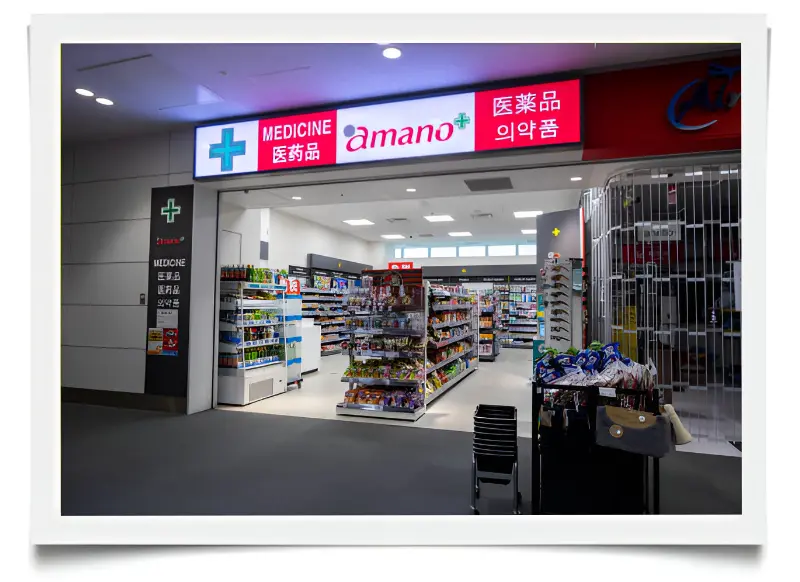
Japan’s Harsh Drug Laws
1. Drug Restrictions: Japan has relatively strict drug laws, and several drugs that are quite legal and widely prescribed elsewhere are illegal here. Examples include any medications containing stimulants, such as some ADHD medications, or those containing codeine. Double-check your medication’s legal status before entering the country by contacting an embassy or consulate in Japan.
2. Bringing with You Prescription Medicine: If you have to bring with you medicine that is permissible in Japan, it should be in its original package, clearly labeled. Also, bring with you a copy of your prescription and a letter from your doctor elaborating on your need for the medication. In some cases, depending on the kind and quantity, an application is required for a Yakkan Shoumei-a sort of import certificate.
3. Out of Trouble: At all times, never ship prescription drugs to Japan. Prescription drugs are required to be in your carry-on baggage and, if applicable, declared upon importation. If found undeclared or as an illegal medication, arrest, detention, and stiff penalties may result.

General Safety Tips
1. Natural Disasters Earthquakes, tsunamis, and typhoons are common natural disasters in Japan. Familiarize yourself with safety measures in your accommodation, and always follow the advice of local people. Mobile apps like Yurekuru Call for earthquake alerts, and Japan Official Travel App may provide useful information as well as warnings in time.
2. Personal Safety: Even though Japan is a very safe country from the point of security, one should always be a little careful, especially in crowded places, against pickpocketing, because it is so common at tourist spots.
3. Emergency Kit: Small kit containing water, snacks, first aid supplies, a flashlight, and a whistle would be big in helping in case one gets detained by a major delay or some kind of natural disaster.
Readiness means peace of mind.
The best one can have is respecting its drug laws and knowing and understanding how to use Japan’s healthcare system. This will be of help in making the travel experience more enjoyable. The listed ensure that one is prepared in any kind of situation that allows exploration of this country of interest with confidence and more security.
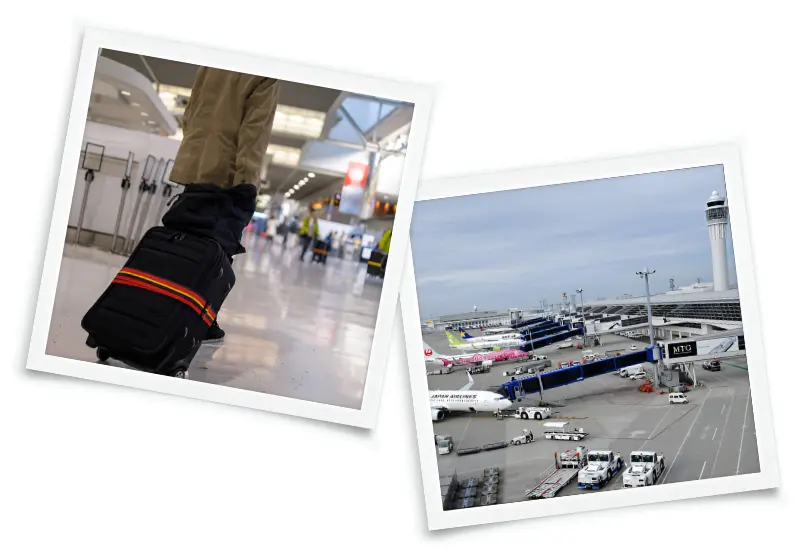
10. Leaving Tips: How to leave Japan smoothly
The departure from Japan can be as easy as your arrival if you know how things happen at the airports and what to expect when leaving. Here are some basic tips that shall ensure that your departure from Japan is as smooth as the rest of your stay, hence letting you enjoy the last moments of your journey without any kind of trouble.
Understanding Airport Procedures
1. Arrive Early Japanese airports advise that one should arrive at least two hours prior to domestic flights and three hours for international flights, whereby you can move through the check-ins, security checks, and do some last-minute shopping or dining inside the airport.
2. Check-in: Understand the check-in procedure of your airline. Most of them do allow online check-in that could save a lot of time at airports. Always keep your travel documents handy. This should include passport and your flight ticket.
3. Tax Refund If you have purchased something in anticipation of a tax refund, do this before check-in since some of the items are usually demanded at the tax refund counter. Some tax refund counters can also be found at Japanese airport terminals but these are normally placed next to where passengers check in.
4. Security Scanners Security at Japanese airports is strict but effective. One may expect taking off not just one’s shoes and belt but what is inside the pocket as well. Laptops and other big electronical devices normally need to be taken out from the bags and put on a separate tray to be screened separately.
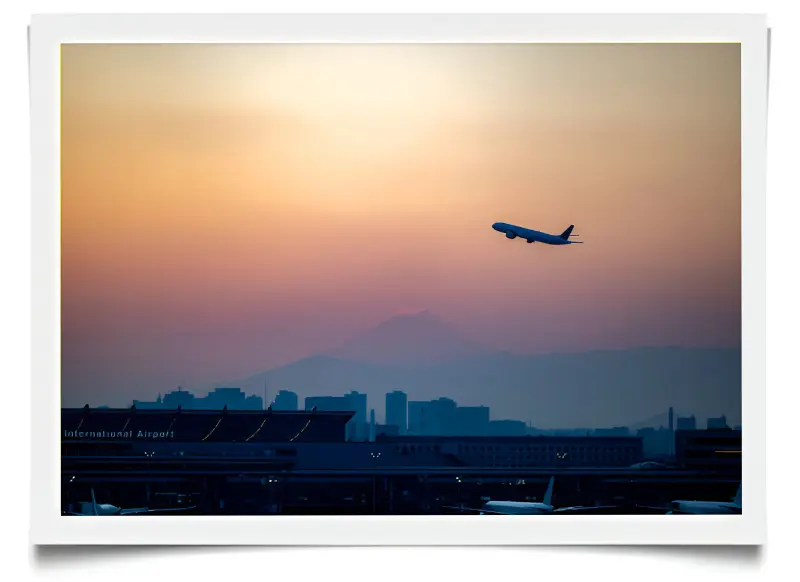
Final Verifications
1. Travel documents: Carry along necessary documents such as passport, visa if needed, airline tickets, and any other notices your airline may need to accept you for travel because of health or other reasons.
2. Prohibited Items– Never bring along any item which is forbidden or has crossed the limit of liquids in the carry-on. Always read out the rules of both airports and airlines beforehand in order to avoid any hassle during the security checking.
3. Souvenirs and Gifts: Ensure that all your souvenirs and gifts are packed in your checked luggage, especially sharp objects that are not permitted in your carry-on. If you’re carrying back food items, particularly fruits, vegetables, or meats, check the import restrictions of your home country to avoid issues upon arrival.
4. Currency Exchange It would make much sense to change some remaining Japanese yen back into your home currency when leaving the country; you probably won’t find a very attractive rate here at the airport, anyway. Make sure to break small denominations; you can keep the broken bills as a souvenir or for future trips.
5. Connectivity: Return the pocket Wi-Fi, in case of rental, at the airport rental counter at the time of leaving. If you have purchased any SIM, let it be disposed off appropriately if not needed anymore.
6. Luggage Take care to see that your luggage meets the weight requirement of your airline, so that you are not liable for excess baggage charges on check-in. Most airports in Japan have wrapping facilities available so that you may protect your checked luggage.
Living Your Last Days in Japan
Then, after all the checks and procedures are done, take some time to relax and indulge in what the airport has in store. Most Japanese airports, like Narita and Haneda, have their respective shopping malls, wide-ranging dining areas, and even cultural exhibits so you can enjoy your last few minutes in comfort before you leave. So, such tips for leaving will ensure that the last hours spent in Japan are not less fun and enjoyable than everything spent traveling. Preparation and acquaintance with procedures at airports will be key at the point of transition to such a banal life routine from so unforgettable travel in Japan.
Conclusion:
Combine those with top travel tips and the excellent knowledge of what not to do, and you glide through with seamless grace through the richness in both Japan’s ancient cultural tapestry and its technological marvels. Arm yourself with that knowledge, and it is no longer a visit-it’s an experience. Time to pack up, charge those cameras, and get ready to have tradition meet tomorrow. This outline shows how a traveler can be better prepared in his journey to Japan, putting emphasis on the practical view of culture and safety of traveling.

